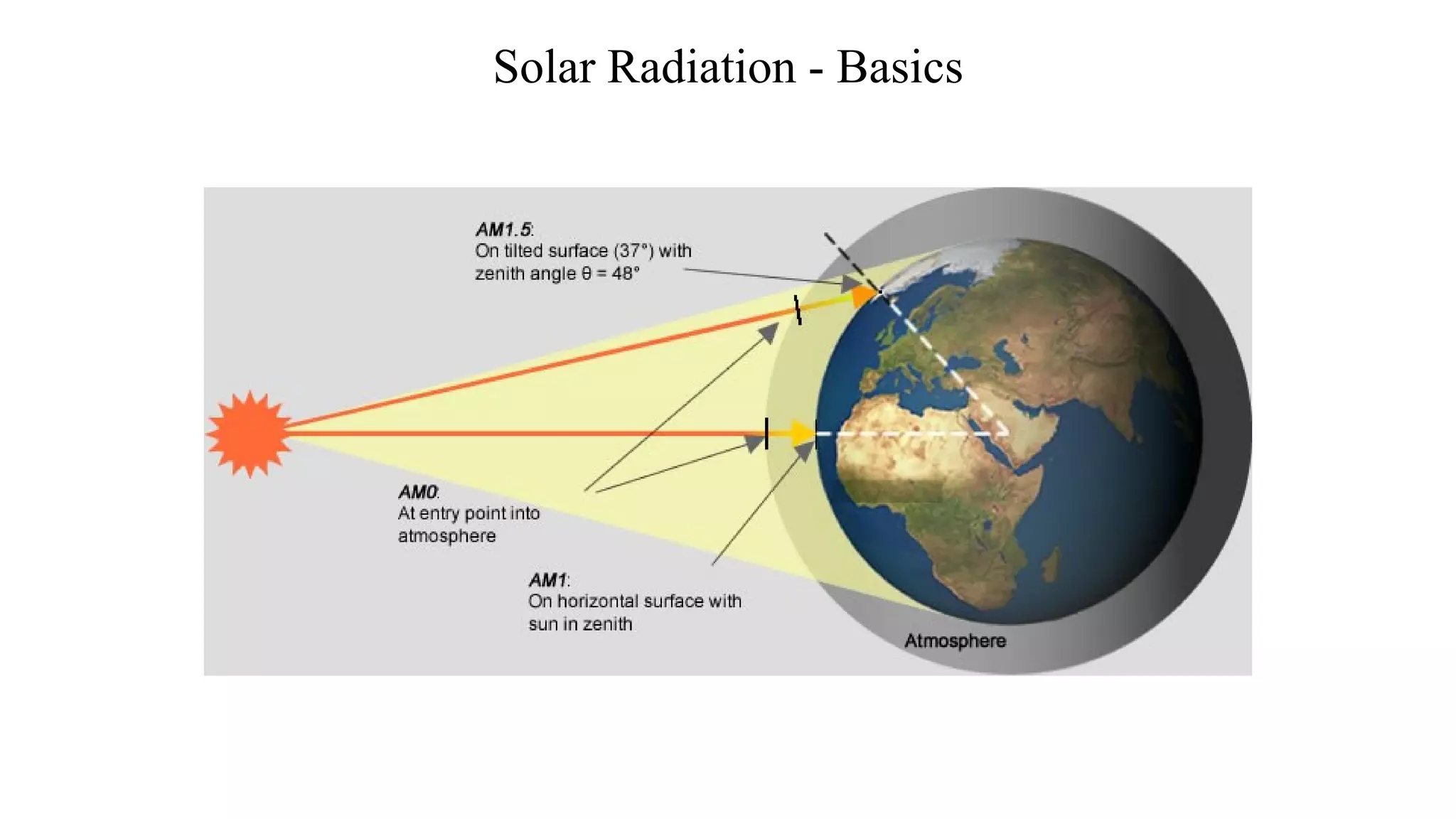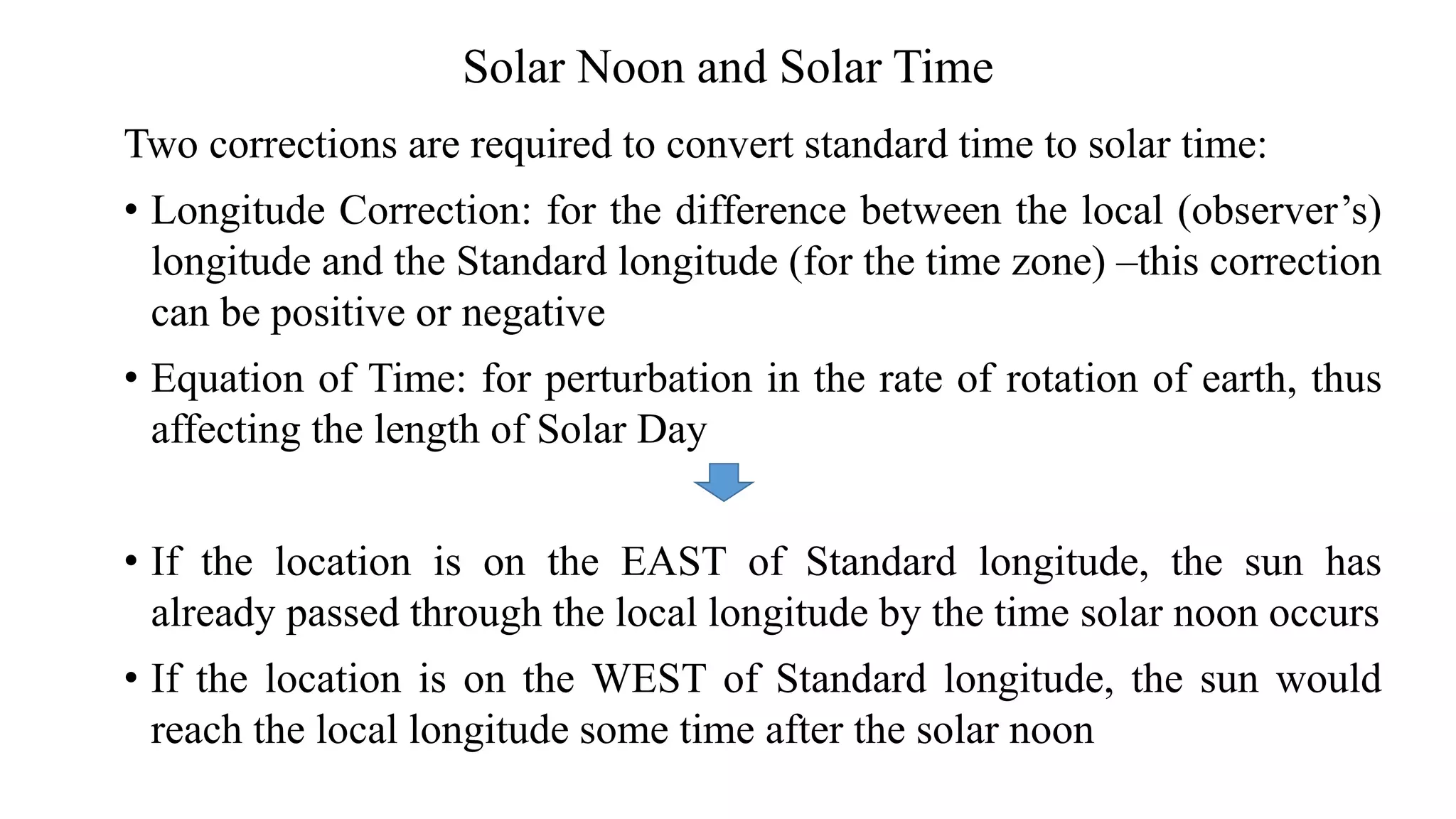This document discusses solar energy basics including solar radiation, solar resource assessment, and solar geometry. Some key points:
- Solar radiation received on Earth consists of direct beam and diffuse radiation after passing through the atmosphere. The amount of each component depends on factors like air mass and atmospheric conditions.
- Solar geometry concepts like zenith angle, declination, and hour angle are used to determine the direction of incoming solar radiation and calculate quantities like duration of sunshine.
- Equations are provided to calculate the angle of incidence of direct radiation on tilted surfaces, as well as the total solar radiation received, accounting for direct beam, diffuse sky, and ground-reflected components.
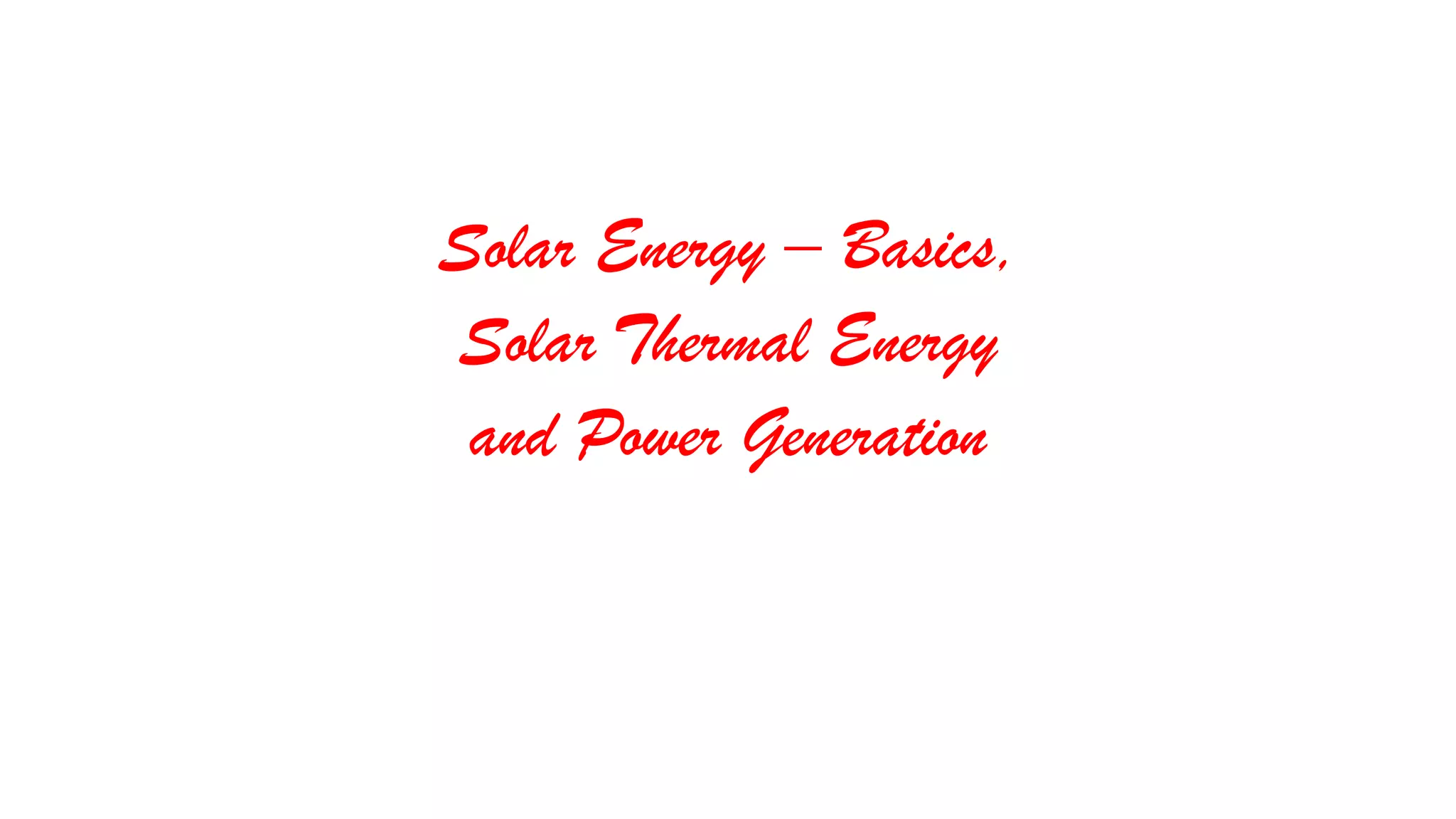
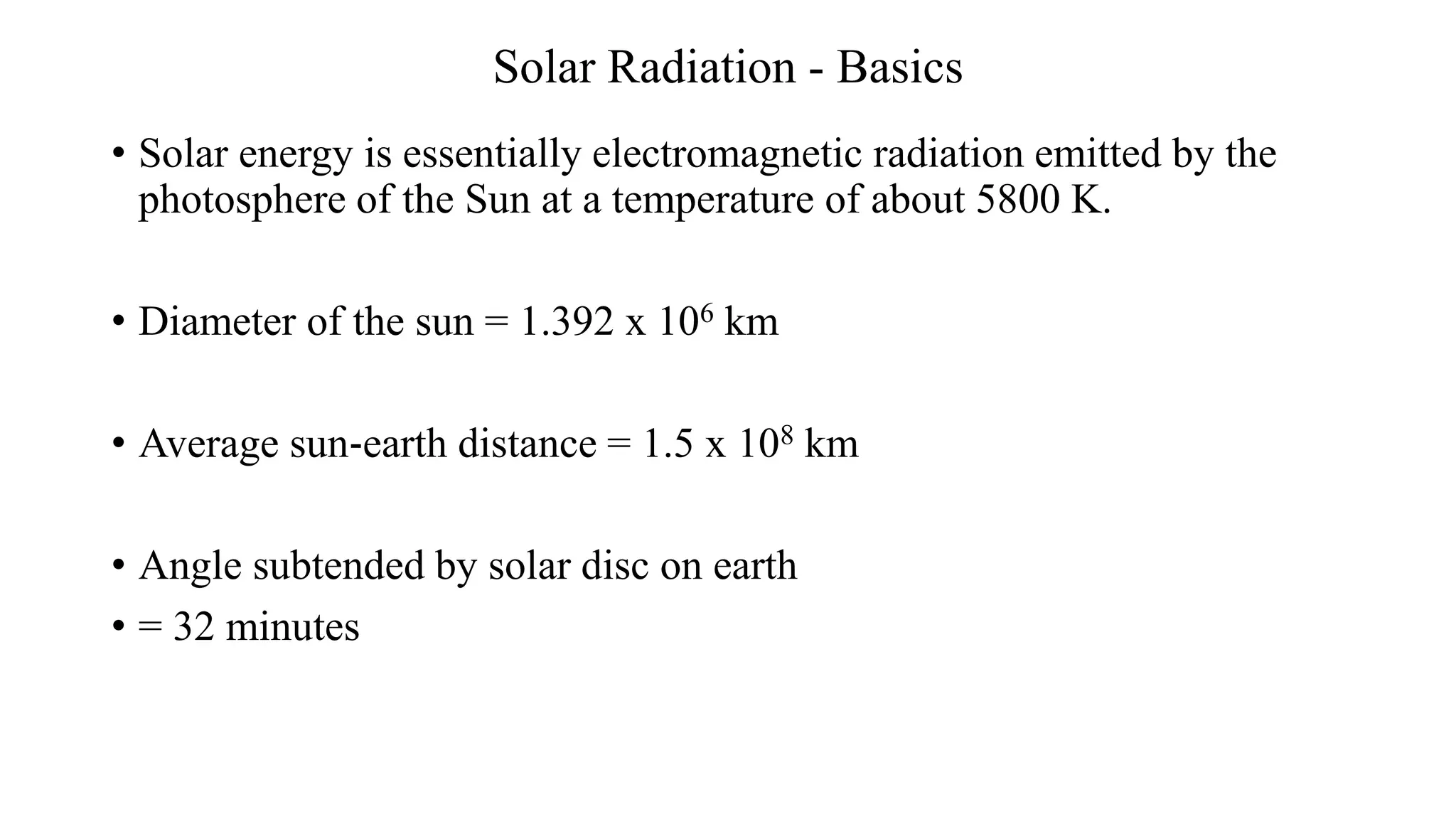
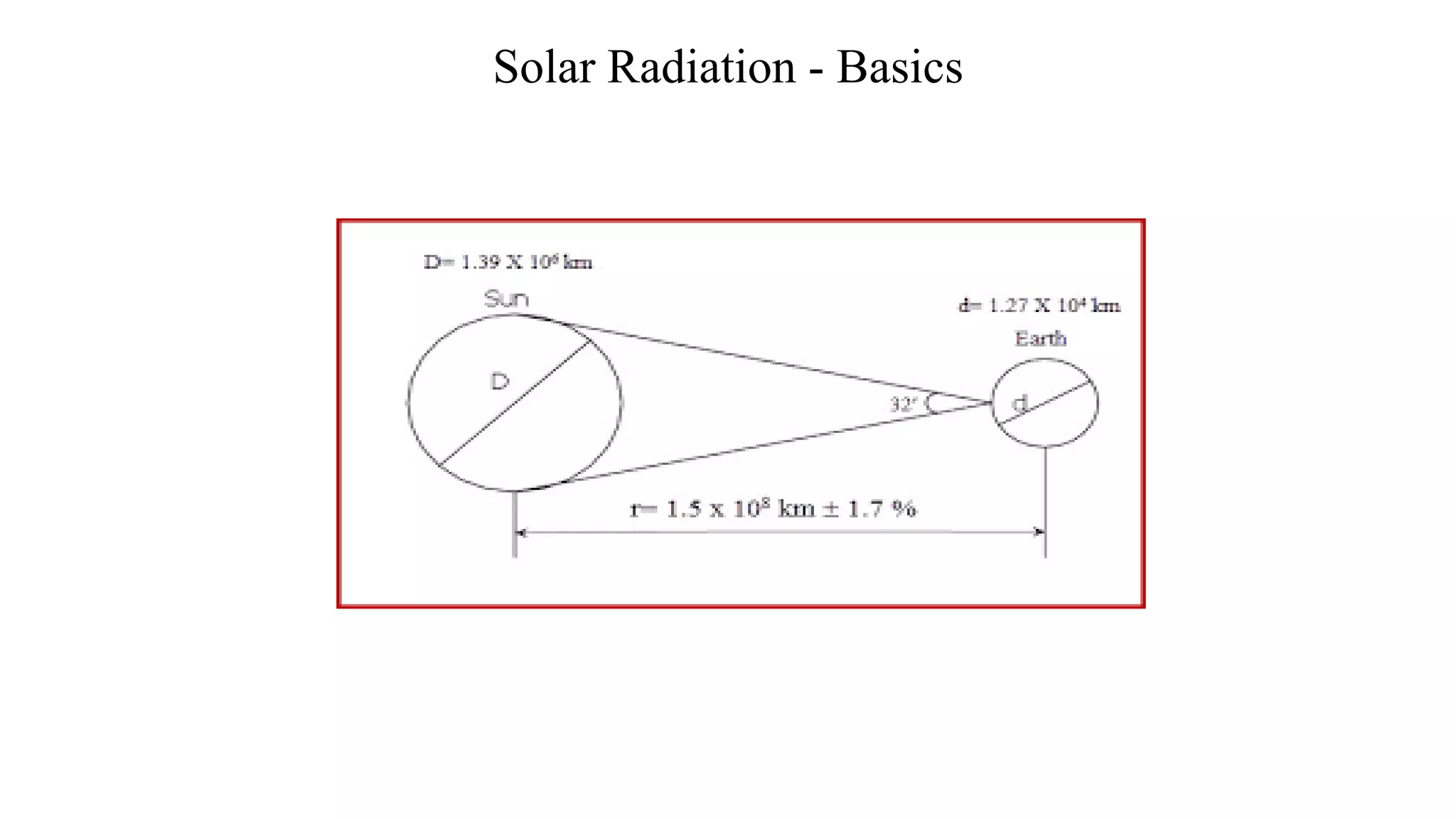




![Extra‐terrestrial Solar Radiation
• Solar radiation just outside the earth’s atmosphere
• Change in the value of extra‐terrestrial solar radiation just outside the
earth’s atmosphere due to change in earth‐sun distance
• Extraterrestrial Solar Radiation: Solar Constant
GON = GSC [ 1+ 0.033 cos (360 n/ 365)]](https://image.slidesharecdn.com/lectureslides-solarenergybasicsandutilization1-230507174519-679c52b1/75/Lecture-Slides-Solar-Energy-Basics-and-Utilization-1-pdf-8-2048.jpg)








